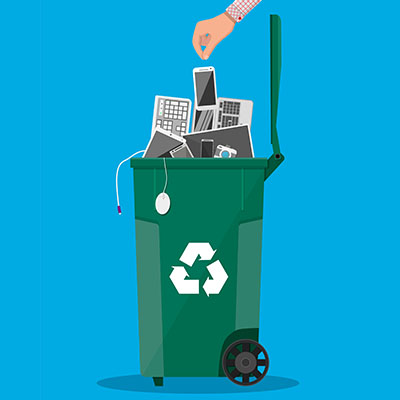With plenty of benefits to be had from both in-house and remote operations, many companies have been working to take advantage of a hybrid approach to business. While this approach has proven greatly beneficial to businesses in assorted ways, there are a few drawbacks that need to be addressed. One major one: a lack of inclusivity.
Businesses have a lot of troubles to manage, one of which is their technology breaking down and interrupting their operations. You have options to ensure these circumstances do not influence your operations to the degree they once may have. Let’s discuss some of the ways you can address malfunctioning IT before it impacts your productivity.
Looking back at the past few years, it’s little wonder that many people have become more concerned about their health—particularly when it comes to the workplace and spending extended amounts of time in the vicinity of other people. This makes it important that you do everything you can to make your workplace a healthier and safer-feeling place to work… but how?
While it can be too easy to assume that specialized software, like customer relationship management (CRM) software is reserved exclusively for massive companies, there are a lot of benefits that small businesses can see from using it. Let’s take a look at some of these benefits now.
In the post Prime Day space, you might realize that you have purchased quite a few consumer electronics from the web retailer, and if you did, we hope you found some great deals that you can write home about. But before you throw out your old devices in favor of the new, we urge you to think about the approach you are going to take, as improper recycling and disposal of devices could have negative effects on both the environment and your personal data.
If you work with technology, then you are likely to have a good idea of what innovation is and isn’t. Innovation is born from creativity, and while it’s not often associated with business IT, there is something to be said for how technology professionals solve problems in a creative fashion, solving problems with solutions available either in-house or on the market. Today, we are focusing on how this creativity can be an asset and how you can foster creative thought in your office.
There are countless stressors that must be taken into consideration for your business, but there are two that stand out as chiefly important during the workday: digital/workplace friction and interpersonal friction. What can you do to help make them less of a problem for your employees?
It’s fair to say that, across the board, times have been particularly tough as of late for businesses. On top of businesses having to fight through the socioeconomic crisis created by the COVID-19 pandemic and the supply chain issues, they also have to juggle more data than ever. In short, businesses need reliable and cost-effective ways to manage their critical technologies.
Innovation is a driving force behind business, and it has been for essentially the entirety of human existence. The pandemic has brought about an era where businesses are producing solutions that have many new features, but these features don’t necessarily enhance or add anything to the customer experience. Let’s examine how this desire to stay profitable flies in the face of true innovation and doesn’t provide useful or practical products to consumers.
How seriously does your business take data backup and disaster recovery? You might not be able to predict the future or what might occur, but you can at least prepare for it to mitigate the damage it could potentially bring about. Today, we want to share some of the best practices you can implement to combat even the worst disaster scenarios your organization might encounter.










